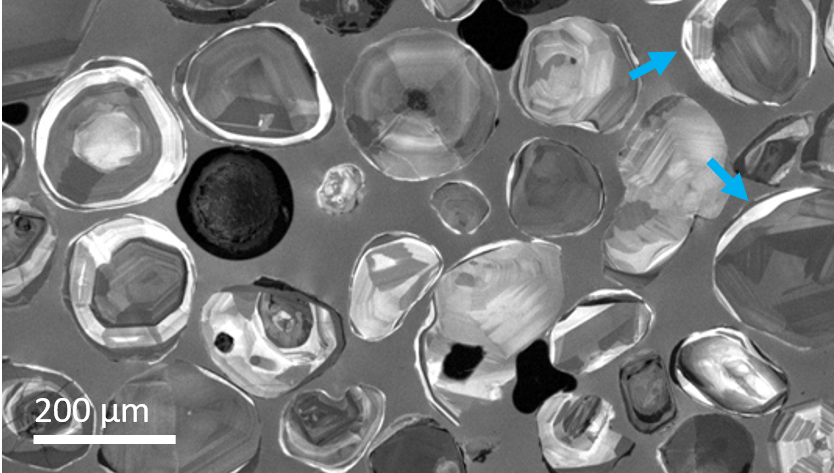Zircons
Geochronology
Zircons are frequently used as geological clocks because they include small amounts of radioactive uranium isotopes and their decay products are incorporated into the crystal structure during crystallization. In old inherited zircon cores, younger igneous zircons, or ones that have undergone more than one crystallization event, the U/Pb isotope ratio in each crystallization period will differ based on the time elapsed (uranium is immobile in the zircon crystal). This polyphase structure is often not recognizable by conventional imaging methods, such as light microscopy, but is necessary for accurate dating results. However, zircons can be selected for dating purposes using cathodoluminescence (CL) in the scanning electron microscope. An unfiltered CL image is useful to identify zircon phases of different ages that appear as bright regions (e.g., the presence of late rims) at the grain perimeter. Moreover, conclusions on the origin and development of the inherited phases can be drawn by comparison with detrital zircons.
